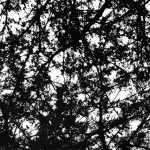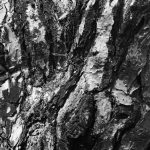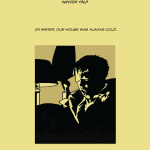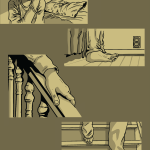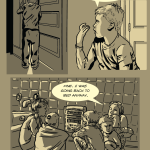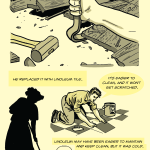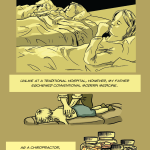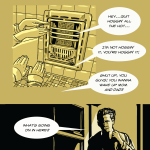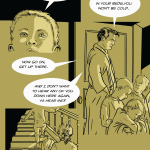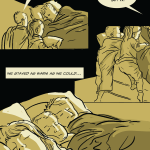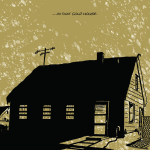Green Matter / Gray Space is a play on words from the terms “green space” (an area of grass, trees, or other vegetation set apart for recreational or aesthetic purposes in an otherwise urban environment) and “gray matter” (the darker tissue of the brain and spinal cord, consisting mainly of nerve cell bodies and branching dendrites). The increasing population growth in cities calls into question (or enters into a gray area) the future of green space. When every area of a city is constructed for housing and other buildings, the area of green space per capita shrinks. If the vegetation that has, over time, been ripped out to make space for more human activity can be thought of as the gray matter of the ecosystem, what is it that we are doing to the intelligence of our planet’s environment? With climate change, our insatiable waste, and minimization of plant life, how will our health as city dwellers be impacted by the diminishing environment we rely upon for water, air, and food?
Category: Aquifer
Questions for a Dinosaur
Salvaging Beauty
(for Alan)
Peonies are blooming
to the point of collapse.
They lean into each other
with nothing to say.
Gracing lawn and stones,
thousands of fragrant petals,
extravagant as wings
relinquished.
To make final bouquets, I take
every flower that does not dissolve
at touch—late blooms, buds
surrounding first display—
pinks, bold and blushed;
shameless yellow;
white, center-stained
with crimson.
Every vase chipped
or cracked I fill;
vases on every table
in the house. I leave
the lawn scattered
with petals and stems.
I wait for the scent
of this dying
beauty.
Flightless
Seeking Warmth
A Balm to Soothe the Fevers
Bluer and More Vast by Michael Hettich
Hysterical Books, 2018
Paperback, 82 pages, $15.00

In Michael Hettich’s Bluer and More Vast, the reader bears witness to a man who is barely and beautifully tethered to the world around us. These small prose poems are evocative, tender stories of companionship, confusion, home life, memories of fathers, and dreams of wives and husbands dreaming together. In “The Double Dream of Sleeping,” we are invited inside:
One night, my wife and I dreamed the same dream: we had carried our mattress to the ocean, thrown it into water and climbed on. We lay together in that bed as we drifted out into the deep water, in a night that was teeming with stars and silence.
What happens next, as throughout the collection, asks more questions of us than provides answers: What is memory? A dream? Family? Can small things save us?
The man and his family here reside in tandem with opossum families and insect worlds and the forest dwellers and everywhere the presence of birds, the birds, the wild Florida birds. Their homes are in the water and in the branches and the moss and the boat. We are all in it with him and looking around and wondering. Hettich brings a David Byrne-like beautiful befuddlement to it all: Is this my beautiful wife? Who am I? How did I get here?
Reading a new collection by a white male poet isn’t usually first on my poetry list these days. I have spent too many years on assigned books written by white men, and I need to catch up on years and years of missed and silenced voices from my queer, brown, trans, young, female, Asian, and other and other and other poetry family. I approached Bluer and More Vast with my armor up. I was curious. What does a seasoned white male poet have to say to me, a woman, right now? Right now?
In the end, I am grateful for the read and review. Taken as a whole, the collection feels like a balm to soothe the fevers whipped up in my body—and so many othered bodies—these days. Oh, these days. Even my teenage daughter has been taught dozens of dark, dystopian YA books in recent years—a response, they say, to our untethered, anxious world. Hettich’s prose is like a pill one can take to quiet some of the angry male voices on the air, across the bumper stickers that berate us, the defiant, spewing Supreme Court nominees.
The speaker of these poems is a man at once fully grounded and light as air—someone who puts a soup in the crock pot and carries injured long-necked herons to bed (“The Guest”) and who loves his wife. Really loves her. So many love poems here. Did Hettich know we needed this? In “Sunday Morning” a man recalls a long list of the books he and his wife are reading, and the passing of the days together:
We were putting our reading aside and going out to putter in our garden, to listen to the cardinals and mockingbirds and mourning doves, to smell the spearmint we’d planted by the henna tree. It was raining then, softly, and we let ourselves get wet, soaked through to the skin, which belonged to us now.
The beautiful, dreamy poem “To Sing The World” almost asks what is love? And it is not too sentimental; rather, in Hettich’s hands, it becomes serious meta-commentary in a world battered by a lack of gentleness.
Magical realism works well for these poems, especially because they occupy that murky, liminal place: the prose poem. Hettich’s emphasis is on story and mood more than traditional poetic elements like sound or metaphor. What is happening to these people, these fish, the deer with bird nests nestled in racks on their heads at the beach (“Solitude”)? Strange and confusing things, sure, but the reader is not scared. The language is evocative and beautiful, so the brevity of each piece lends an urgency to the collection that is hopeful instead of harried.
Hettich’s words play with idea and imagery, giving us just enough weirdness to want more. Does he want us to know he is dreaming or does he want us to just not care for once, to get in the poem and go? “The Ordinary Wonders” encapsulates much of the trip we are taken on, via spider web and the neighbor’s lusty libretto. These poems and this speaker are something to sing about. And so, in turn, are the little and big lives always happening around us. Like Mary Oliver, Hettich skillfully slows us down, and we look together on the wading birds in ways more studied than sappy, more insightful than ordinary in spite of the quiet subject matter.
And we wonder, too, as we sink in steel lawn chairs with Hettich and our ancestors all around us smoking pipes and bringing wayward turtles to our laps. All along the birds and the neighbors and the mothers keep singing and the opossums lumber. It is the big world in our small yards. It is knowing:
Everywhere we look there are reasons to go home
I felt like the poet carried me through this book because I needed to rest. It felt good to know, just a few poems in, that I could be taken well care of with words. The poems were the lullabies, the myths made by us, and maybe they were breadcrumbs, too. Maybe Hettich is a kind of prose poem Pied Piper, but he is not leading me far from home. He is trying to tell me, trying to tell us, that home is the safe place and the vast, relentless water rising all around at once. It is loving the person beside us as much as the people still in our dreams. It is standing in the shallows every chance we get. It is our feet finding sand dollars in the water while we still can.
The Shrapnel of Being
Reading Life by Chris Arthur
Negative Capability Press, 2017
Paperback, 202 pages, $15.95

Chris Arthur, a native of Ulster, Ireland and a long-time resident of Wales and Scotland, happens to be one of the prominent authors of long-form, meditative essays published in America. All but one of his books have appeared with a US publisher, and he makes frequent appearances in Best American Essays as well as a variety of US literary journals. Reading Life, his sixth collection, declares again a kind of trans-border citizenship through his lifelong residence in texts and the literary imagination. It offers his most direct commentary on the form of the essay itself.
“Perhaps no essayist,” he muses, “is worthy of that name unless he or she succeeds in creating objects which do not resemble their usual descriptors but are instead depicted in that elemental rawness which shows how little, in the ordinary run of things, we allow them to resemble what they in fact appear to be.” The sequence of negatives and reversals in the sentence indicate the complexity of the task: truth is, of course, elusive; evidence is illusive; the essay, with its epigrammatic etymology of provisionality and its seventeenth-century pedigree, must somehow get beyond these matters and uncover the bones.
Writing instructors often coach students in the practices that lead to a “writing life,” and Arthur’s title hints at a kind of companion practice, how to establish a life as a reader. In this vein, he re-examines texts acquired in his youth, such as novelist Flann O’Brien’s At Swim-Two-Birds, “a piece of literary flotsam picked up on one of the many occasions when I was beachcombing in bookshops in my late teens.” On the occasion of his ten-year-old daughter being assigned to read Erich Maria Remarque’s All Quiet on the Western Front, he wonders whether the novel’s gruesomeness might be at best a “curious choice” or “unsuitable” for children that age and decides to re-read the novel alongside her to consider the question carefully.
But these sorts of reflections—living with and re-living familiar texts—are just one of Arthur’s intentions in Reading Life. In “reading” the objects of the world around us, Arthur offers a kind of enactment and commentary regarding the essayist’s purpose. “Essays deal in the shrapnel of being,” he writes, “turning over now one piece, now another, carefully running the fingers of their prose along the edges, testing for sharpness, looking for hints of connection, feeling for the cut-off remnants of joins, trying to reconstruct a sense of setting, context, contiguity, extrapolating from the minuscule moments and objects that create a life reminders of the massive milieu in which they and it are embedded.” The extended metaphor—stunning in its disruptive mashup of violence and contemplation—exemplifies Arthur’s method. He favors complex and suspended syntax; he crafts intricate details that subtly interconnect.
Arthur’s essays have always worked by way of fragments, assembling mosaics or braiding multiple narratives. His style lies in the scope of these assemblages and the patient, measured pacing with which he brings the pieces together and an unseen pattern emerges. Sometimes those fragments are literally objects—a whale’s tooth, for example, that Arthur subjects to close examination and free association, linking the memory of his childhood visits to the dentist who gave him the small artifact to consideration of the unbroken texts of DNA, “a paired line of antecedents going back some 60 million years to the land animals whales once were … [leading] finally to the same destination: that moment of naked singularity, the great beginning, the point at which there was something rather than nothing.” (This was one of my favorites in the book, recalling in some ways “Miracles” from his 2005 Irish Haiku, in which the fossilized bone from a whale’s ear resonates with connection to cosmic unity and the disunity of religiopolitical violence in Northern Ireland.)
Arthur’s omnivorous attention “reads” moments from literary history—a passage in the Goncourt brothers’ Journal containing an image of child prostitution in nineteenth-century France; a few degrees of separation regarding Seamus Heaney and his famous Bog Bodies poems—and from personal experience—leading a group of writing students out into the snow on a quest for found objects as writing prompts; “listening” to the histories associated with three walking sticks Arthur inherited. Through these readings, the richness he gleans includes delight in language itself (acquiring new words like “sett” and “clough”), companionship in shared meaning (“one of the things I’ve always liked about second-hand books is the way they hold the spoor of other readers and how, following their tracks, a sense of almost tribal complicity can be kindled”), the sudden shock or surprise of entering an alternate point of view (“why did this glimpse of child prostitution in nineteenth-century France strike me so forcefully that it felt—still feels—as if it left a splinter?”). Such “splinters” stay a long while with the reader, too—that’s part of Arthur’s power as prose writer, to deliver images, or facts, or anecdotes that work their barbed way more deeply in.
Reading Life is distinguished from his previous books in its deliberate commentary on form and theory. Essayists often like to comment on the meandering, fragmentary, organic approach that seems fundamental to the form, and Arthur has done so before. But here he devotes more direct consideration to such matters. Instead of losing himself in the unfolding energy of the essays, more often Arthur remains a self-conscious, authoritative as well as authorial presence. It’s sometimes as if he’s holding a subject before his own and the reader’s gaze, while simultaneously commenting upon what gazing feels like and explaining how sight casts an upside-down image of the world on an imaginary screen on the back of the eye.
And so “Sonatina for Oboe and Bayonet (Reading All Quiet on the Western Front),” the piece in which Arthur and his daughter read two distinct editions (his a 1963 edition with a cover depicting the dead and dying, hers with “only…an artful image of a poppy”), the story of their reading widens to recount their discussion of what a bayonet actually is (a knife the size of an oboe, he explains at first) and to examine one from the World War I theater purchased long ago from a junk shop. Soon the essay also provides a close reading of its own movement, Arthur explicating for the reader the image he’s just drawn, laying out the layers of symbolism he perceives there, making what moments before were implicit, explicit. The prospect of his own daughter on the floor between the musical instrument she plays at school and the authentic German bayonet her father has brought for her to look at “makes a powerful cameo … freezing into a kind of icon of incongruity that’s at once symbolic and interrogative,” Arthur muses. “It symbolizes vividly the way in which our world is riven by the coexistence of opposites: gentleness and brutality; compassion and cruelty; beauty and ugliness; creativity and destruction; peace and war. These polarities can pull apart any equilibrium of meaning we try to lay between them. Their sudden alternations act like military rounds, pounding the semblance of order on which we build our lives.”
This, too, is vintage Chris Arthur. Calm and articulate, while pointing to the firing guns.
Ghosts in the Trees
Day of All Saints by Patricia Grace King
Miami University Press, 2017
Paperback, 96 pages, $15.00
Winner of the 2017 Miami University Novella Prize

Patricia Grace King begins her novella Day of All Saints with an image of ghosts: “Ghosts in the trees. Martín wants to rip them all down. If he could, he’d bury them deep in the flowerbed that he’s uprooting, or stomp them into the grass.” These ghosts, Halloween decorations that adorn a yard in Chicago’s affluent north side, are anything but playful; rather, they represent the suppressed memory of trauma, specifically the horrors of the Guatemalan Civil War, which haunts Martín Silva de Choc, and, indeed, the pages of this stunning short novel. It follows King’s two previous fiction chapbooks, The Death of Carrie Bradshaw (Kore Press, 2011), and Rubia (winner of our very first Jeanne Leiby Memorial Chapbook Prize here at The Florida Review, 2012). Her work is growing in power, and here she draws on her three years spent in Guatemala working with refugees of that country’s civil war.
Although the primary narrative, set in Chicago in the 1990s, unfolds over the course of a single day, King skillfully weaves in flashbacks that take place in Guatemala City. There, Martín, a young language instructor, lives with his grandmother, Doña Ana, and his aunt, Rosa, in the El Incienso barrio, to which he moved when he was four, as “civil war ripped through the rest of the country.” In the first of these flashbacks, Martín falls in love with a US foreign exchange student, Abby, even as her social, economic, and national privilege cause her to fetishize, to romanticize through a Eurocentric lens, the very neighborhood in which Martín lives. “This feels Mediterranean, somehow,” says Abby, “‘If you just nearly shut your eyes … If you look through your lashes.’” Indeed, the crux of the work hinges on how Martín and Abby, though in love with one another, cannot communicate in a meaningful way due to their different cultural identities and experiences. Doña Ana, in telling of her former life in the Ixcán in the 1970s, echoes this difference when she juxtaposes Guatemalan culture with US culture. Of her own culture, she says,
And I had my own small diversions: nights I sang with the neighbors, down at the Pérezes’ house—the Pérezes had a marimba—and the priests’ visits on weekends. They came regularly then, to say Mass on Saturday and to hold Spanish classes for us women, since back in the highlands we’d mainly spoken K’iché.
She follows this observation with one of US culture during the same era: “In America, what were they doing—roller-skating? Donna Summer? Don’t look so surprised; I know who she is. Electing Señor Ronald Reagan, too, weren’t they? Who sent our Army so many guns.” This cultural difference, and its underlying significance, permeates the work and is ever-present in Martín and Abby’s relationship. When they move to Chicago, their bond becomes tenuous, and their different social positions and histories more starkly defined. As Abby attends art classes at a university, Martín works as a day laborer. And while Abby has her own past trauma related to her mother, she ultimately has the privilege of security. When she leaves Martín, haunted as he is by the brutal deaths of his parents and extended family members, she finds safe haven in the home of her mother on the north side. Martín, however, bewildered and alone in a new country, finds himself without such material and emotional sanctuary.
King writes a story within a story within a story, and she does so in lyrical language with details so vivid that the reader cannot help but enter the picture she paints. In the primary narrative, Martín searches for and then finds Abby at her mother’s home, and in the secondary narrative, Martín and Abby fall in love in Guatemala. In the tertiary narrative, Doña Ana, over a dinner prepared for Abby at home in El Incienso, begins the story that is the heart of the text—the traumatic events that occurred in the Ixcán and that haunt Martín and his remaining family members.
This narrative, begun in a flashback sequence, ultimately enters the primary narrative as Martín faces the ghosts of his past, who appear before him in a memory long suppressed. He can no longer banish these ghosts, nor can the reader, who encounters them, and the world they inhabit, at every turn. They are “[t]he heat [of the Ixcán, which] was this thing that sat down on your skin and would never let you up. And the mud—you would sink in it up to your knees. You could lose your own shoes in that mud.” They are “‘[t]he fog on those mountains … something you miss when you’ve left them—how it flies from the peaks like white laundry.’” These ghosts drift through the text, hovering on the periphery of the psyche in both Martín and the reader.
In Day of All Saints, King makes a thoughtful social statement about cultural difference and First World privilege: as Martín observes, “Halloween: a day of no real significance in Guatemala. What matters, instead, is El Dia de Todos los Santos, Day of All Saints, one day afterward.” However, she does so without ever allowing that statement to overwhelm the true focus of the story: Martín’s strength and fortitude, indeed the strength and fortitude of his family, the other residents of El Incienso, and the citizens of Guatemala, which shine throughout the course of the text. King’s characterization of Doña Ana; Aunt Rosa; Don Gustavo, Aunt Rosa’s romantic companion; and Ernestina, the young woman of Ixcán who chooses to leave behind her village and her birth name in order to fight for the resistance, is honest, nuanced, and deeply affecting, largely because of how King understates their sacrifices.
Ultimately, though, Martín is the character who most affects the reader, not, solely, because the narrative is focused through him, but because of the complexity of his character. He is a man in love with a foreign woman, a woman who wishes to heal the wounds of his past in the same way that she wishes to heal a wound on his hand, but he is also a man deeply connected to his place of origin, his remaining family members, and his fragmented history. He haunts us, as does the ending in which, hunched against the trunk of a tree in the Palm Room of the Lincoln Park Conservatory, he confronts the ghosts of his past that have now entered his present. It is closing time at the conservatory, but this room is the ever-present Ixcán, where the guerillas, dressed in “camo-green,” await to aid survivors of the army’s ruthless actions, and he is trapped there “[a]mong the wet trees.” He knows that “soon the people in green will come for him too,” with a green-aproned conservatory attendant poised to tell him, “‘Sir, it’s time to go now.’” Where will he go when he leaves the Palm Room? One hopes to a sanctuary of his own creation.
Interview: Marie Howe



Marie Howe is originally from Rochester, New York, and is the author of four poetry collections, of which the most recent is Magdalene (W. W. Norton, 2017), a musing of the channeled voice of the Biblical Mary Magdalene. The oldest girl of nine siblings, she did not seriously write poetry until the age of thirty. Howe, whose brother John died of an AIDS-related illness in 1989, has said: “John’s living and dying changed my aesthetic entirely.” Her poems have appeared in literary journals and magazines including The New Yorker, The Atlantic, Poetry, Agni, Ploughshares, and Harvard Review. Honors include the National Endowment for the Arts and Guggenheim fellowships. In January 2018, Howe was elected a Chancellor of the Academy of American Poets.
Judith Roney for The Florida Review:
I’m so excited to get to speak with you: Irish Catholic grade school commonality! Oh my, the stories! Reading your poems cues me in as to your own immense, lingering remembrances of an American Irish Catholic upbringing, grade school, and family. Your collection of the death of your brother—
Howe:
What the Living Do—
TFR:
Yes—I’ve taught that book—it resonates so much for me personally, and now I have the chance to ask you how your most recent book, Magdalene, came about.
Howe:
I feel fortunate to have been brought up in a tradition that had a very strong symbolic world. I was the oldest daughter of nine children. I’m the only one who went to a convent school, Sacred Heart in Rochester. I first went to parochial school, then this convent school. From a very early age, the gospels, and what we call “the old testaments,” and of course what the
Jewish tradition calls the Torah—the stories meant a great deal to me.
TFR:
In what way, specifically?
Howe:
Well, they felt archetypal and deeply poetic as there were so many silences in them.
TFR:
Silences?
Howe:
Yes, silent space where they could be inhabited, and of course in the Jewish tradition there’s midrash, a critical explanation where the Torah is considered a living document, and the rabbis imagine into those silences, and continue to create the Torah. I always loved those stories and the spaces one could inhabit within them—all those stories of Cain and Abel, Abraham and Isaac, and the Jewish great dilemmas, or debates as they’re also called.
TFR:
I studied the Kabbalah in an undergrad course on world religion and love that aspect about Judaism—the intellectual debates with the sense that the faith is in a state of evolving. I like this idea of “silences.”
Howe:
Yes, exactly. And the silences, well, Moses was a stutterer—I was a stutterer as a young person, and I identified. Really, so many of the stories, right up to the New Testament, I was able to identify with, and those stores still mean a great deal to me. Some people grow up with the Greek myths, or other some other kinds of symbolic worlds, but that was the world I grew up in, the Biblical one.
TFR:
At the side of my nightstand when I was a child, I had a huge children’s Bible storybook with the most amazing illustrations. I still have it. I feel the stories helped create who I am. It’s not that my beliefs are the same as when I was a child, but as a writer, they’re so foundational when you hear them at a young age. Do they always find a way into your work?
Howe:
Not always, I mean there are many poems where they don’t, not really, but like any interior world they are there, somewhere, always in the background. They were for many people, for many writers, like Tolstoy and Kierkegaard. You know, he spent years writing about the Abraham and Isaac story.
TFR:
In Fear and Trembling—
Howe:
Yes, and for me, always of course like many girls, it was Magdalene’s story that appealed to me. I knew from a very young age that how she was depicted was wrong.
TFR:
I always questioned the Cain and Abel story, why an all powerful being would prefer a lamb over wheat. It always bothered me. Mary Magdalene too, I always thought of the scene where the crowd was going to stone her.
Howe:
I knew it, always, I just knew it. And then later, when studying the New Testament and the early Church, I studied with Elaine Pagels, actually, who wrote a book about the gnostic gospels, and how the church fathers created that persona of Magdalene we came to know. [The Gnostic Gospels, Vintage, 1979].
TFR:
This is why I love your book—you’ve given her the voice stolen, and let her take advantage of the empty space left.
Howe:
We’ll never know, as much as we want to know about the historical woman, and as a woman I can identify with a her searching for meaning and for her own subjectivity outside the norms that existed for her then.
TFR:
That is sad, really, right? I mean all the women of the Bible, and there are so many! Their voices have been filtered, right? We only get to hear the redacted male versions. When did this idea come to you, to focus poems on her? Is this the first you wrote of her?
Howe:
I’d been trying to write in the voice of Magdalene for thirty years. I think trying is the key word there—for me it was a kind of receptivity that had to occur, I think I had to grow up!
TFR:
I get that. I’ve had to move away from the religion of my childhood, and then sort of dance with it through the years. Or maybe I should say break up with it, and reconcile, and then do it all over again. It feels like it will be a life-long process. As a poet I’ve written in the voice of Eve, Noah’s wife, stuck on that boat, questioning her husband’s sanity, and recently a piece where I envisioned Adam going through a divorce in twenty-first century Florida before heading off to Vegas. I never thought about Magdalene, really, and now I feel a bit bad about that. I did do an ekphrastic poem based on a de La Tour painting before I knew of your collection. I’m interested: When you found yourself exploring, felt her voice coming out, would you say you were channeling her? That’s how I feel they come to me, as if I’m the receptacle and I let them speak.
Howe:
Well, it is and it isn’t, I mean in the book she’s me, she’s you, she’s a contemporary woman, she’s a woman who’s still in history.
TFR:
“Still in history.” Could you speak to that phrase a little more?
Howe:
I mean every poem, of course, for me is different. Some are more like just me wearing a mask of Magdalene, but sometimes it’s like everything is there, and I feel she is me, she is you, she’s the woman over there. That what was taken from us, from us women, was our commonality of her—she was turned, by men, into a repentant prostitute, who was closed off to us. I feel she’s the female principle trying to integrate herself.
TFR:
I wanted to ask, how you feel about it—that she’s the one who always had to be forgiven for something, or Eve, right? These voiceless women who’ve been reduced, in so many ways, to objects in need of forgiveness.
Howe:
According to the story, it might have been her, or it might not have been her. A lot of those female figures were combined in the gospels to one kind of object, a female representational object for men.
TFR:
To fit into their narratives.
Howe:
Right. Have you read the gnostic gospels and the gospel according to Mary Magdalene?
TFR:
No, only the old and new, the little blurb-version in my Catholic Bible.
Howe:
The gnostic gospels were outlawed by the Catholic Church, and we had no access to them until they were found in the late 1940s in a cave in Egypt—
TFR:
The dead sea scrolls?
Howe:
They were found along with the dead sea scrolls, but they really were the Gnostics, the early Christian communities who called themselves the Gnostics, and there is a gospel according to Mary Magdalene. There’s a story that you can get, though the original scroll was tattered and there’s a lot of empty spaces, as it’s ripped up, perhaps missing some pages.
TFR:
A physical object that was found then. Is there an idea when she wrote it?
Howe:
There’s also many different ones, gospels, thirty or forty of them. As Elaine Pagels notes, there is a Gospel of Mary Magdalene, and in it she is “a character.” Whoever she was, the early communities split off into different kinds of communities, you know, then someone dies, a leader or writer, and arguments arise: He said this, she said that, they were all priests at that time, it was circular, both men and women, in a circular community that was eventually outlawed by the hierarchy of the patriarchal central church that determined priests and bishops should be all male, with no women in even perfunctory roles.
TFR:
Which of course left us with two thousand years of patriarch-diluted history.
Howe:
Yes, oppressions of female history!
TFR:
This book, this collection, I feel, on oppression, is quite timely. On the other hand, when wouldn’t it have been? It’s two thousand years in the making. What do you want to say to young female poets, with your own revelations, about what we’ve always known of as sexual harassment?
Howe:
The key thing we’ve always known is that women know women who have been beaten down, drowned, burned, killed, beaten to death by men. I mean, I love men, but the patriarchy has to end. That’s the political feeling I have, as a poet. I feel Muriel Rukeyser’s great poets’ voice of [German artist] Käthe Kollwitz in the poem of the same name, comments in her poem, “What would happen if one woman told the truth about her life? The world would split open.” I feel we need to tell the truth about our lives. and we’ve been telling the truth all along, but no one would write it for us. There were a few women writers, but they’re almost invisible. We have to tell the truth about our lives. So I would tell young female poets, “Tell the truth about your life. Whatever that means.” All of our young women poets need to tell the truth in such a way they become transformed in the telling, which is what poetry does. Mere complaint doesn’t do it, mere witness doesn’t even do it. Something has to occur in the telling that’s transformative to the writer.
TFR:
Thank you for that. I find in some contemporary poetry it’s men and women ranting, and the ranting doesn’t do it.
Howe:
This is a very mysterious aspect of art, right? That somehow through language and style, silence and metaphor, and musicality, and writing into a subject, not merely about a subject, but into what you don’t understand about it, about the subject, then one becomes transformed in the act of writing, and one discovers something one doesn’t know, and that is what art is for. There’s nothing wrong with witness, we need it, but art transforms the maker. Art transforms both the poet and the reader.
TFR:
Do you feel once the poem leaves you it becomes the reader’s?
Howe:
That’s the great thing about poetry. It’s worthless in the commodified world and doesn’t belong to anybody. That what is so precious, one of that last things that can’t be sold. Learn poems by heart, and then take them across borders. Put them in your wallet, on your refrigerator, carry them around—that’s what I’ve done all my life! Cut out poems and carry them around. I didn’t have to ask permission, the poem belongs to the world—this gift is one of the last examples that shows how art belongs to all of us.
TFR:
I tell my students I probably only appreciate about 30 percent of the poems I read, and of that 30 percent there are only a few I love, but those poems help me live. I take them with me when I try to go to sleep at night after a horrible day. In your book, What the Living Do, you endured the death of your brother. I had a younger brother who died at forty-three of alcoholism.
Howe:
I’m so sorry! In my family too, we dealt with that. I feel the same way. Poetry saved my life.
Natural Order
I’m a little more prairie than you, Mom.
Grew up a stone’s throw from winding,
forested trails. Trees arched over gravel
roads, and the place in the powder sky
where their branches met, a cathedral ceiling.
You buried downed birds in shallow graves,
in a vacant lot by your apartment. I watched
a whole deer decompose in a field. Made a school
project of her. Every quarter, on my class trip
to buckthorn country, to the task of weeding-out
invasive plant species, I saw the same doe
sink deeper into the ground. Drew her outline
on a worksheet more and more skeletal
with each visit to her muddy bedside. Mom,
you too have watched the seasons change.
Your childhood rotted into caretaking,
like a sun-bleached cordgrass giving
its whole self back to the ground.
When you were seven, you started buying
the family’s groceries each week—
cans of beans stacked in a bike basket,
cradled by cornstarch and white flour.
In elementary school, all my teachers
had the same four-pronged chart
of the seasons: spring turned
summer, then a gentle decline
into fall and a snowman
smiling through winter.
Nothing in nature actually follows
this pattern. A field mouse breeds
too many young, swallows
half of them back into herself.


